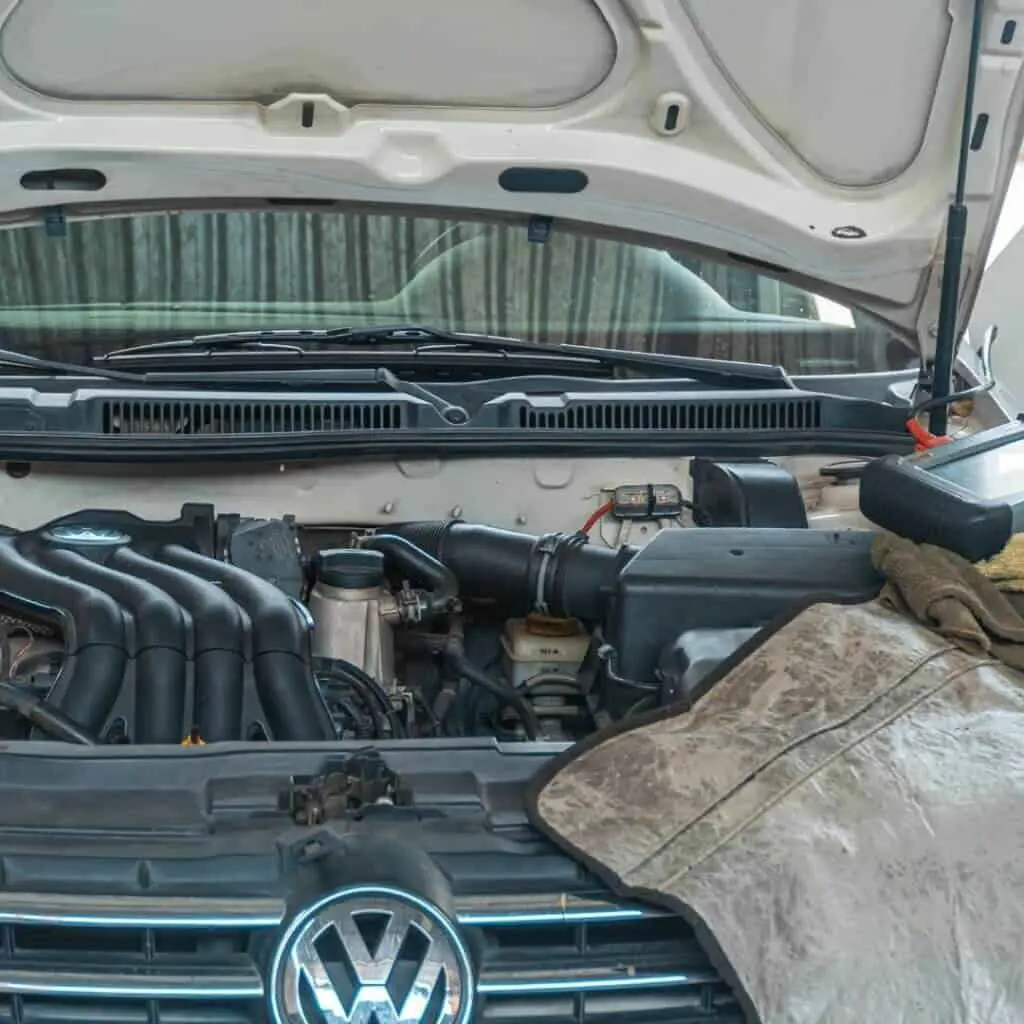Are you familiar with BMW 435d Problems that may occur?
The BMW 435d is part of the popular 4 Series lineup. The series is known for its impressive performance, elegant design, and advanced technology. The car is powered by a 3.0-liter inline six-cylinder diesel engine that produces 313 to 340 horsepower and plenty of torque.
BMW 435d has an eight-speed automatic transmission and all-wheel drive system for exceptional traction. It is equipped with the iDrive infotainment system and adaptive cruise control, among other features.
Despite its rugged build and great performance, the BMW 435d has its share of problems. We discuss the most common BMW 435d problems to help you make an informed purchase decision.
Common BMW 435d Problems

BMW 435d problems include carbon buildup in the intake manifold, trouble with the fuel pump, DPF, and turbocharger issues, as well as suspension and drivetrain problems. Each of the issues is discussed in detail below.
- Carbon Build-up in the intake manifold
There is a cost to pay for the excellent performance benefits of direct fuel injection. Carbon deposits on intake valves is a design issue associated with direct fuel injection engines, including the BMW 435d. This problem arises due to the design of the engine’s intake system [1].
Unlike port injection, direct injection engines bypass the intake valves and spray fuel directly into the combustion chamber. This mechanism allows the car to increase fuel mileage, power, and efficiency.
As a result, the intake valves are not subjected to the cleansing power of fuel washing over them leading to carbon deposition. The carbon deposits can lead to various issues.
Reduced engine efficiency is one of the most noticeable symptoms. It results in a decrease in power and fuel economy. A rough idle may also occur as the deposits affect air and fuel flow.
Some BMW owners use walnut blasting to mitigate carbon build-up, where crushed walnut shells are used to clean the intake valves [2].
Using high-quality fuel additives to remove carbon deposits can also help maintain engine performance.
- Diesel Particulate Filter (DPF) Issues
Some BWM 435d drivers have reported problems related to the Diesel Particulate Filter (DPF) being blocked. A dashboard light is the most apparent symptom of a blocked DPF.
Most vehicles have sensors that monitor how the car is performing. When a sensor detects an incorrect reading, it will report to the Electronic Control Unit (ECU). If there is a malfunction in any component, a warning light will pop up on your dashboard.
Another indication of a blocked DPF is the activation of the car’s limp mode. This usually happens if you ignore the DPF warning light for a while. In this case, the DPF will continue to choke, and the limp mode will be activated to prevent further damage.
When the car goes into limp mode, its performance significantly decreases, usually limiting you to a certain amount of revs to protect the car [3]. Reduced fuel economy is one of the first pointers that your vehicle is not working as it should be.
This is because once ECU detects soot build-up in the DPF, the car over-fuels to raise exhaust temperatures and allow the DPF to restore and clear itself.
To address a blocked DPF, BMW 435d owners should attempt a regeneration process. Regeneration is a method by which the DPF cleans itself by burning off accumulated soot. In other cases, seeking professional DPF cleaning services is advisable.
- High-Pressure Fuel Pump Failures
High-pressure fuel pump failure is common with many BMW models, including the BMW 435d. The fuel pump compresses fuel and increases the pressure. This is necessary for guaranteeing efficient engine performance.
High-pressure fuel pump failure in a BMW may be for several reasons. This may include leaks in the injector pump, use of poor-quality oil, lack of oil change, and/or solenoid failure.
A malfunction in the pump automatically disrupts the vehicle’s performance. Common symptoms of high-pressure fuel pump issues include the engine failing to start, engine misfires, rough idling, jerking when accelerating, and reduced power.
The best step to take when the fuel pump fails is to have a qualified mechanic check it as soon as possible. If left unchecked, the malfunctioning fuel pump can damage other parts of the engine. Also, consider taking your car for regular servicing to decrease the likelihood of fuel pump failure. [4]
- Turbocharger Problems
Turbochargers are a defining feature of many BMW models, including the 435d. They enhance engine power by compressing air into the combustion chamber. While turbochargers are excellent for performance, they are subject to damage.
Several reasons account for turbocharger failure. They include poor oil quality, foreign objects or broken engine components, and or other debris entering the turbocharge [5]. Other factors are wear and tear, over-spooling, moisture ingress, and excessive exhaust gas temperatures. The most obvious sign that your turbo is failing is the whining noise produced when the turbo is engaged.
The best preventative measure for turbocharger failure is regular maintenance. This includes following recommended oil change intervals using the appropriate synthetic oil. Furthermore, if you are experiencing any warning signs, take your car to a garage for a more thorough inspection.
- Suspension and Drivetrain Problems
Understanding the meaning of your BMW 435d drivetrain alerts will save you a lot of headaches. Drivetrain malfunction signals indicate a transmission or engine problem detected by the Engine Control Module (ECM).
Because of its sporty nature, the BMW 435d might experience suspension and drivetrain issues that affect ride quality and handling. Symptoms of a drivetrain malfunction include a Check Engine lamp, an iDrive screen displaying a drivetrain error message, and rough idling. Constant vibration, engine cutting off when the gear is engaged, and transmission getting stuck in gear are additional indicators of failure.
Drivetrain malfunctions can be traced to a couple of causes. These include damaged fuel injectors, malfunctioning mass airflow sensors, blown head gaskets, or defective turbo. Furthermore, faulty or worn-out spark plugs can alter the proper functioning of a BMW’s drivetrain.
Regular checkups of suspension parts, such as control arms, bushings, and struts, can aid in noticing and addressing these problems early.
- Cooling System Problems
An overheating engine is a problem reported by some BMW 435d owners. It’s a serious issue that can lead to significant damage.
An overheating engine often results from a combination of factors. Inadequate coolant levels, leaks from components such as hoses or radiators, and a faulty thermostat that fails to regulate coolant flow are possible causes.
A clogged radiator obstructs proper heat dissipation. Faulty cooling fans may fail to adequately cool the radiator. A worn or damaged water pump will not circulate coolant effectively. The first sign of a cooling system failure is a high internal temperature, a steaming hood, and exhaust smoke.
To prevent overheating, owners should check the coolant levels regularly and inspect the cooling system for leaks. Over time, hoses and connections can deteriorate, leading to coolant leakage. Addressing these issues promptly can help maintain the cooling system’s efficiency and prevent costly engine repairs. [6]
Related: BMW 116i Problems
Conclusion
BMW 435d owners should be aware of common issues and their solutions to ensure their vehicle performs optimally for long. Recognizing the symptoms of failing vehicle components is essential for addressing those issues.
You should also call in an expert when necessary to help you fix the problem when you cannot do it by yourself. Proper maintenance and timely attention to common issues will preserve the car’s performance and enhance the overall ownership experience.
Read Next: BMW N57 Engine Problems




